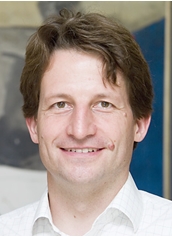A major philanthropic shift is under way in Asia. The growing numbers of newly wealthy are seeking more effective ways to create positive social change. Meanwhile, a major intergenerational transfer of wealth is occurring as many founders retire in favour of  the next generation, who are often both highly educated and civic minded. Asia has a long philanthropic tradition of funding schools, hospitals and religious organizations. Now these trends are paving the way for new thinking about how to do philanthropy.
the next generation, who are often both highly educated and civic minded. Asia has a long philanthropic tradition of funding schools, hospitals and religious organizations. Now these trends are paving the way for new thinking about how to do philanthropy.
The philanthropic environment in Asia is dynamic. In terms of readiness for a more strategic or engaged approach, it is similar to Europe around 2000 when venture philanthropy first began to gain traction. In Europe the practice of venture philanthropy has expanded from grants to recoverable debt, equity and social investment bonds which are tailored to the needs of both non-profits and social enterprises. These innovations expand both the total capital available and the funding sources.
The VP approach seems to resonate well with business owners, entrepreneurs and financial investors who seek to apply business skills in addressing social issues. According to Francis Ngai, CEO and co-founder of Social Ventures Hong Kong, the company ‘is now in its sixth year and we are seeing excellent growth from an increasingly wider group of funders to include foundations, high net worth individuals, and corporations. They like our focus on innovation, transparency, efficiency and effectiveness.’
As a result, a growing number of wealthy Asian philanthropists are adopting venture philanthropy as an effective model to help foster innovation and risk-taking, and to scale successful non-profits and social enterprises. The Asian Venture Philanthropy Network (AVPN) has grown rapidly since its launch in December 2011 and now has more than 120 members from 20 countries. Through its emphasis on collaboration, transparency and signposting, AVPN is effectively bringing together a wide range of providers of capital. AVPN’s 40 practising members (those actually employing VP techniques) include organizations such as Schoenfeld Foundation, Lok Capital, LGT Venture Philanthropy, Leapfrog Labs and Unitus Impact, which describe themselves as impact investors. Other practising members such as Edelgive Foundation, Narada Foundation, Social Ventures Australia and ChangeFusion use the more general term venture philanthropist. Some active impact investors such as Avantage Ventures, Village People Project and Kinara Indonesia prefer to distance their model of creating social impact from philanthropy but are active in AVPN’s community of 80 associate members. Associate members also include private equity firms, professional service firms, corporations, foundations and wealth advisers.
Because venture philanthropy includes both social impact investment capital and philanthropic capital (grants), the theme of AVPN’s first regional conference in Singapore is ‘Creating Social Impact: Blending Philanthropic and Investment Capital’. The event brings together leaders from both ends of the spectrum to explore why both sources of funding are needed. Prominent conference participants include Amir Khan of the Bill & Melinda Gates Foundation (India), Annie Chen of R S Group (Hong Kong), Laurence Lien of the National Volunteer and Philanthropy Centre (Singapore) and Gaungshen Gao of the Sun Culture Foundation (China).
Both types of capital will clearly be necessary. Research from Monitor Group in collaboration with Acumen Fund[1] suggests the need for ‘enterprise philanthropy’ (or patient/ philanthropic capital) for early-stage risk-taking when investing in single companies. On the other hand, when it comes to accelerating impact on a large scale, more recent research from Omidyar Network[2] proposes supporting industry sectors not just individual organizations with ‘flexible capital’.
By using the defining characteristics of venture philanthropy (high engagement, tailored financing, multi-year financial support, targeted non-financial support, organizational capacity-building and performance measurement) AVPN, through its membership, provides a bridge between impact investing and grants.
1 From Blueprint to Scale: The case for philanthropy in impact investing (May 2012).
2 Priming the Pump: The case for a sector based approach to impact investing (September 2012).
Doug Miller is chair of AVPN and Simon Chadwick is CEO. Emails doug@avpn.asia and simon@avpn.asia
1st AVPN conference
Creating Social Impact: Blending philanthropic and investment capital
Date 9-10 May, 2013
Venue Singapore Management University, Singapore
http://www.avpn2013.com



Comments (0)